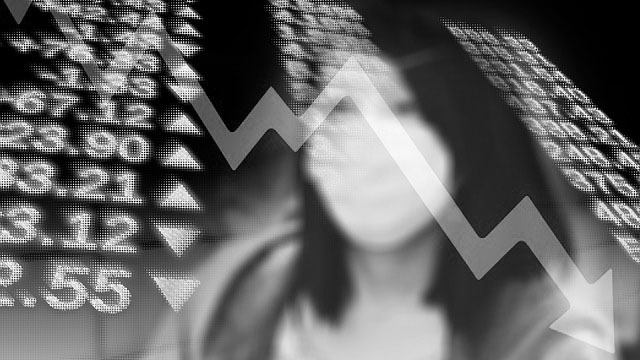The Indian economy’s crisis isn’t showing any sign of waning as the complications caused by Prime Minister Narendra Modi’s disastrous and inhuman COVID-19 lockdown has aggravated it manifold. The Ministry of Statistics and Programme Implementation’s National Statistical Office, in its index for industrial production (IIP) report for August 2020, said: “Quick Estimates of Index of Industrial Production (IIP) with base 2011-12 stands at 116.1. The Indices of Industrial Production for the Mining, Manufacturing and Electricity sectors for the month of August 2020 stand at 83.0, 117.4 and 162.7 respectively”.
Industrial output fell for the sixth month in a row in August 2020. The IIP shrank by 8% on a year-on-year basis in August 2020, which many would call a positive sign because it’s slightly higher than July when the IIP shrank by 10.8% vis-à-vis July 2019. The output shrank 18.7% in March 2020, when COVID-19 was declared as a global pandemic.
The situation worsened in April 2020 when the output shrank by 57.3% as only the essentials sector was operational during Modi’s COVID-19 lockdown. In May 2020, the output shrank by 33.4%. Between the months of April and August 2020, output shrank 25%. Capital goods industry has contracted by 15.4%, primary goods industry by 11.1%, while consumer durables contracted by 10.3%. If this IIP contraction wasn’t enough as an indicator of the economy’s bad performance, the spiralling inflation, especially the unchecked food inflation has worsened the situation.
The consumer price index reached 7.34% in September 2020 while the Modi regime remains tight-lipped about the Indian economy’s crisis and tom-toms its fabricated economic success stories. Food price inflation has peaked to 10.68% in September 2020 vis-à-vis 9.05% in August 2020. This 1.63 percentage point increase is caused by the vegetable price spike. As the Modi regime continues to liberalise the farm sector and amended the Essential Commodities Act, 1955, to allow major corporate houses charge up to 50% to 100% higher price legally, by creating an artificial shortage through hoarding, without fearing any government intervention, it’s clear that the food prices will not fall any time soon.
It’s estimated that high vegetable prices will keep the inflation between 6% to 7%, which is above the Reserve Bank of India’s tolerance level of 6%. But then retail inflation has remained above 6% for 10 months, except March 2020. The overall inflation for the second quarter (Q2) of the financial year (FY) 2020-21 is highest in 24 quarters. Core inflation rose to 5.67% in the Q2. In Q3, due to the Hindu festive season, there may be a chance of higher demand and subsequent spiralling of inflation.
After much dilly-dallying over the issue of providing a stimulus to boost demand and relying only on half-hearted liquidity infusion measures during a peak unemployment period with a severe fall in demand, Finance Minister Nirmala Sitharaman announced her much-hyped “stimulus 2.0”, which is again miserable. While Rs 20-trillion-worth liquidity package was peddled as “stimulus” in May 2020, the Rs 730-billion-worth new “stimulus 2.0” is too less, a little over 0.4% of the GDP, to bring any noticeable change.
Though Modi and his NITI Aayog have welcomed the “stimulus 2.0” as a positive step towards resolving the Indian economy’s crisis, experts feel the amount is too less to make a difference. One must see that though employment increased by 5.1m from 392.5m to 397.6m, while unemployment declined by 7.3m from 35.7m to 28.4m in September 2020 vis-à-vis August 2020, the total labour force shrank at the same time.
According to the Centre for Monitoring Indian Economy (CMIE), while the total labour force in the country was 428.3m in August 2020, in September it became 426m. This shows the exit of discouraged workers from the labour market due to not finding employment. This can aggravate the Indian economy’s crisis as at 426m the labour force is 11-12m shorter in September 2020 vis-à-vis September 2019.
The CMIE also showed that while the unemployment rate fell to 6.4% in the week ending September 2020, the fall, which is unprecedented in a long time, is deceptive. It’s rather a sign of a deteriorating labour market. It shows that even the working class isn’t hoping for employment.
Even during such a crucial period when the Indian economy’s crisis continues to affect lives and livelihoods, the government’s expenditures have hit the nadir. The government spending in August 2020 was a seven-month-low at Rs 1.93 trillion, according to the CMIE. The CMIE report shows, at a time when the Indian economy’s crisis demands greater spending by the government, it was 15.2% lower in August 2020 vis-à-vis in August 2019. The Modi regime’s revenue expenditure was also at Rs.1.7 trillion in August 2020, which was lower by 14.3% in comparison to last year and, at the same time, capital expenditure was Rs 226 billion, a 20.9% low.
While mainstream economists, ignoring the inherent character of monopoly-finance capital’s knack for speculative profiteering, still advocate following Keynesian theory of increasing government expenditure to generate demand and helping the private sector to leverage it. It’s clear globally that monopoly-finance capitalism, at the peak of its centralisation quest, isn’t in a mood to enter the productive territory but use speculative bubbles to earn super-profit. This is only possible through high-risk stock trading and repurchase of one’s own stocks.
In the days to come, the Modi regime will also increase bail-out options for the crisis-ridden corporates rather following the Keynesian model. Therefore, it won’t be quite a wise decision to lecture it on such a path that it’s unintending to traverse. Rather, through effective political movements, the need of the hour is to resolve the Indian economy’s crisis through a radical transformation of production relations and economic model. Except this, all path will lead to an abysmal crisis for the poor.
An avid reader and a merciless political analyst. When not writing then either reading something, debating something or sipping espresso with a dash of cream. Street photographer. Tweets as @la_muckraker

